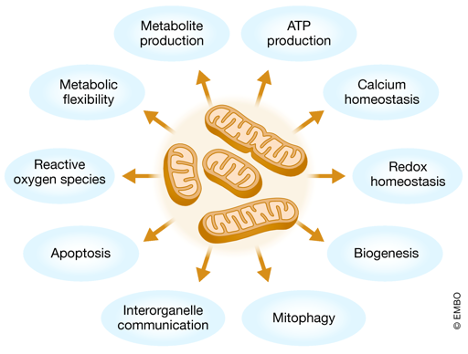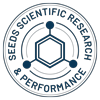The Mighty Mitochondria
Table of Contents
- The Story Behind Mitochondria
- Mitochondria at a Quick Glance
- Mitochondrial Biogenesis: How Your Cells Make More Powerhouses
- Mitochondria: The Key to Metabolic Flexibility
- Redox Balance and Mitochondrial Health: Age Better
- MOTS-c: A Peptide Powerhouse for Mitochondrial Health
- SHMOOSE: A New Clue in the Fight Against Alzheimer's
- Why This Matters
- Boosting Mitochondrial Health With Supplements
Unlock access to this full article with SSRP Membership.
You have probably heard that mitochondria are called the “powerhouse of the cell” and yes, that’s true! These organelles produce ATP, which is the main energy supply that runs our cells. But their job doesn’t end there. Mitochondria are involved in metabolism, cell signaling, immunity, and homeostasis. However, as we age, mitochondria may not always be as efficient, and the processes through which they fuse, divide and transit can be negative impacted.
In this post, I will explain how mitochondria are formed (also known as mitochondrial biogenesis), how mitochondria functioning affects redox balance, the key to mitochondrial flexibility, and how exercise can improve the deterioration of mitochondrial function that is associated with aging. We will also explore some new peptides that have emerged recently, such as MOTS-C and SHMOOSE that are providing new insights into the protection and possibly enhancement of mitochondrial function and longevity.
The Story Behind Mitochondria
Mitochondria were first identified in 1890 by German pathologist Richard Altmann who referred to them as “bioblasts.” It was not until 1967 that scientist Lynn Margulis (then Sagan) suggested a revolutionary theory: mitochondria are the result of a capture of ancient bacteria, which explains why they have their own DNA and ribosomes.
We now know that there are more than 10 billion mitochondria present throughout the cells in the form of complex and dynamic network that control energy production, cellular efficiency, and stress protection. As a result, researchers continue to explore how mitochondrial dysfunctions are associated with diseases such as type 2 diabetes, cancer and neurodegenerative diseases.
One thing to note: Mitochondrial derived microproteins (MDPs) are similar to nuclear encoded microproteins, but they are not the same. These differences will enable us to identify new potential targets for supporting mitochondrial function, as our patients grow older and encounter age-related conditions.

Mitochondria at a Quick Glance
Mitochondria are referred to as the “power houses of the cell” and are involved in several primary functions that affect cell functioning and health span.
Mitochondria:
- Produce adenosine triphosphate (ATP) by oxidative phosphorylation and thus supplies the cell with energy
- Control a number of metabolic functions including the citric acid cycle and fatty acid oxidation
- Assist in the control of calcium concentrations within the cell compartments, which is necessary for cell signaling
- Secrete Ca2+ into the cytoplasm, stimulating cell growth, apoptosis (programmed cell death) and gene expression
- Help in the production of hormones like testosterone and estrogen
Play a role in some cellular signaling processes and thus in cellular communication
In my upcoming Mastermind, we will delve deeper into these two main functions of mitochondria and how you can help support and optimize mitochondrial health for your patients.
Mitochondrial Biogenesis: How Your Cells Make More Powerhouses
Mitochondrial biogenesis refers to the process of cells producing more mitochondria. But new mitochondria don’t simply appear. Instead, existing mitochondria proliferate and divide, increasing their numbers by importing proteins and lipids from the parent cell. This process is very important because it enables the maintenance of the correct energy homeostasis, especially when energy demands change.
SSRP Subscriptions
Unlock Full Access to Articles, Research, Courses & More From Top Cellular Medicine Provided with an SSRP Subscription.
Share this post:
Stay on the Cutting Edge
Highly Curated Cellular Medicine Content, Research, Articles and More.

William Seeds, MD


